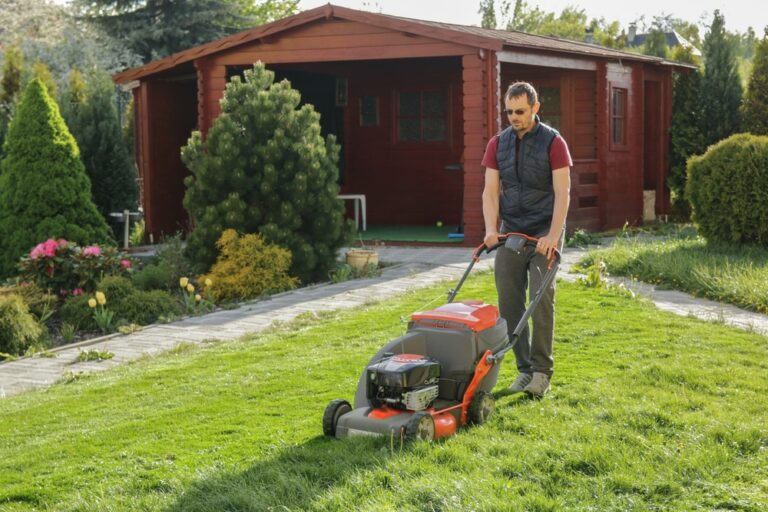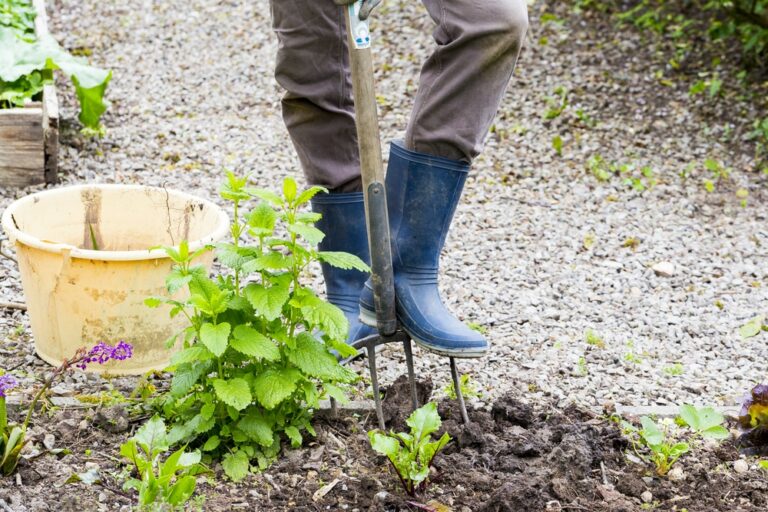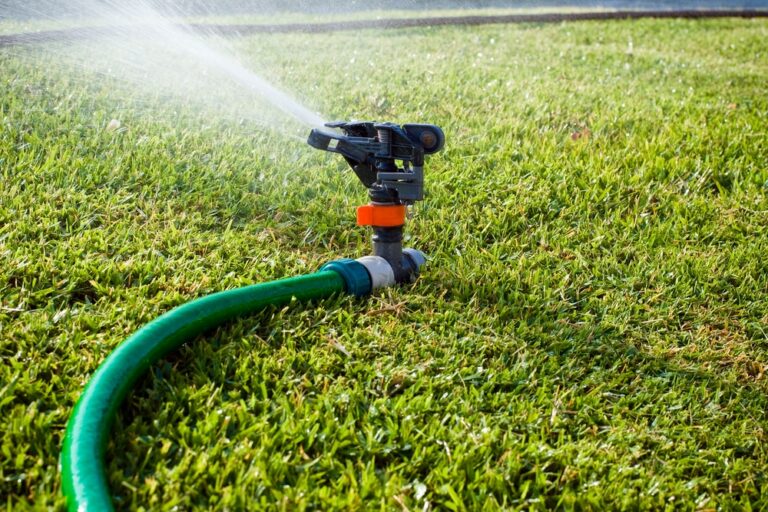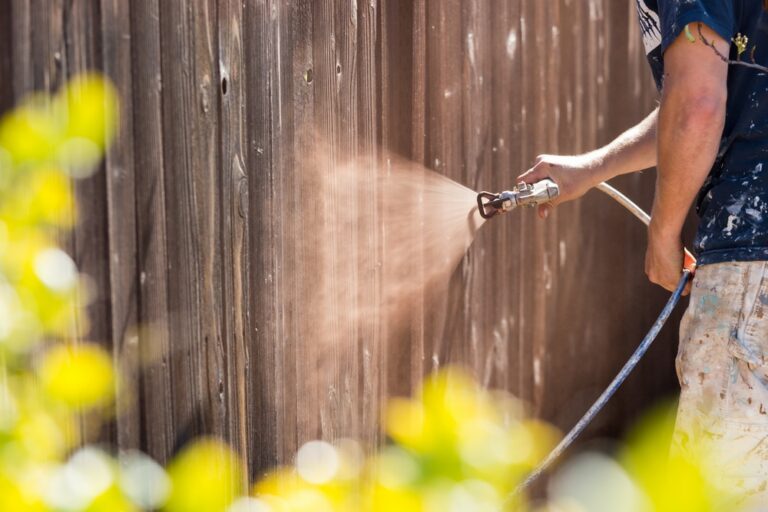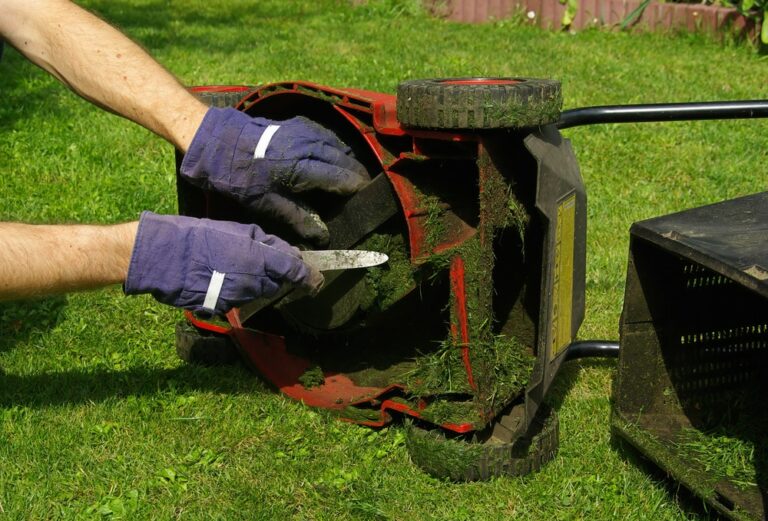Wood chipper blades are one of the most important aspects of a gas-powered wood chipper or garden shredder. The chipper blades shred the plant debris, wood chips, twigs, and leaves, to produce that satisfying garden mulch.
Over time, chipper blades become dull. The high-pressure usage will wear down the bevelled cutting edge and render them ineffective. As a result, you need to know how to sharpen garden shredder blades! This is what we discuss in the below guide, together with a host of useful tips.
What Is a Garden Shredder?
First, let’s look at what a wood chipper/garden shredder is. A wood chipper is a gardening device that can destroy garden materials via a series of sharpened blades. It will have a minimum of two blades, and you simply feed the material through a top input area onto the blades. The blades then take the material, cut it, and feed it through the output area as a by-product.
Wood chippers come in a wide variety of designs. Some have electric engines, whereas others have gas engines. The electric models are typically smaller for home usage. Meanwhile, gas and oil-powered wood chipper devices are often used for industrial/commercial gardening.
A garden shredder has several main components – the chassis/housing, input and output area, the chipper blade, and a collection bin/tray.
Components
The housing is the main body of the chipper. It contains the motor/engine and the chipper blade setup. As mentioned, there are many different types of engines. Also, there are many different types of blade configurations. Some blades are configured in a staggered manner similar to a paper shredder. However, most wood chippers have a circular drum that the blades are attached to.
The input and output areas are essentially where you feed the material and where the mulch/processed material is spat out. Often, the output area also has a collection tray already attached. It creates much less mess and means you can safely remove the processed material.
The blades can be made from different materials, like high-carbon steel. They effectively chew through even tough material and yard debris like branches, twigs, and leaves.
How to Sharpen Garden Shredder Blades – A Simple Guide
We have now discussed the basics of garden shredders. So how do you actually sharpen chipper blades? There are several methods and a host of considerations. Firstly, you must look at if self-sharpening is an option or if a machinist would be the better choice. Next, there are several different self-sharpening methods which are outlined below.
Self-Sharpening, New Blades, or a Machinist?
Firstly, you must look at if it is feasible to sharpen your own wood chipper blades. Admittedly, this process is not for everyone! If you have little DIY knowledge and confidence, it may be better to send your blades to a professional machinist. They can sharpen the blades for you and save you the hassle. The downside is that this is much more expensive and time-consuming.
Alternatively, if you are handy with tools and have DIY experience, removing the blades and sharpening them may be a walk in the park! You can see the basic process from our below guide. You should bear in mind that you will need some specific tools, however. For example, depending on the method you choose, you will need a grinding wheel, angle grinder, sander, or even a belt sander. If you have to invest in something specific, like a grinding wheel, it may not be cost-effective to sharpen your blades. Instead, a professional grinder could be the better option. Alternatively, if you have these tools already for other jobs, self-sharpening could be the perfect answer.
Finally, there is a point where you cannot sharpen the blades. When you start sharpening, you remove material from the blades. Eventually, there is no material left to remove without compromising the shape of the blade. At this point, sharpening is redundant, and new blades are required! The instruction manual of the wood chipper should state how long the wood chipper blades last and how far they can be sharpened.
Removing and Reattaching the Sharp Blades
Before you can do any work, you must remove the wood chipper blades from the housing. It can be a tricky part. Therefore, you must understand how the blades are attached and how the mechanism works – read the instructions!
The blades usually have bolts securing them in place. Depending on the design, these may be attached to a drum. Before doing anything, make sure there is no power source and that the device cannot be powered.
You can then simply use a wrench or Allen key (if provided) to unscrew the housing bolts and remove the blades. We would also advise taking note of the positioning of the blades once you have removed them. It is important to put them back in the correct alignment; otherwise, the cutting motion may not work.
Sharpening With an Angle Grinder or Disc Sander
A common sharpening tool that many people will have is a disc sander or an angle grinder. These are both effective tools for sharpening chipper blades. They are also generally safer to use as you do not have to hold the items during the sharpening process.
If you use a sander, fine-grit sandpaper is the best to use – preferably a 100-grit disc. To sand the blades, you must secure them using a vice. Place them with the bevelled edge facing upwards and make sure they are secured in the vice. It is then a simple process of passing the sanding disc over the bevelled edge. Use quick and short passes to avoid grinding the blade too much.
You could also sharpen more than one blade at a time by lining several together within the vice.
Sharpening With a Wet Wheel Grinder
If you have a variety of cutting tools, you may also have a wet grinder. These are fantastic tools that can be used to sharpen a range of different blades. For example, they can be used to sharpen knives, cutting discs, and of course, chipper blades.
This machine has many advantages over the other methods. Firstly, it is specifically built for sharpening! Secondly, it will usually have a water source that keeps the whetstone cool to avoid overheating. This type of machine also usually has a built-in vice to secure your chipper blades.
Many wood chipper owners will have a whetstone, and this makes the job easier. When using the right tools, you can have less maintenance overall and save money. Therefore, a wet-wheel grinder could be a good investment.
To use a diamond whetstone, you simply start the wheel turning and ensure the water source is active. You can then pass the bevelled blade edge over the wheel in short, quick passes. The ideal chipper blade angle is 30 degrees from the edge of the blade to the vertical side of the blade.
Sharpening With a Belt Sander
If you happen to have a belt sander in your workspace or DIY workstation, this can also be used to sharpen wood chipper blades. It is slightly more dangerous as you are holding the blades themselves instead of holding the item that does the sharpening.
We only advise using this method if you are extremely confident using a belt sander. Also, to sharpen the blades, you should wear protective gear such as protective gloves. You will be holding the chipper blade close to the surface of the belt sander; this could result in a serious accident.
In order to sharpen the blades using a belt sander, it is advisable to use a chisel guide. It can help keep the item steady and make sure you get a smooth, cutting edge. You should place the bevelled surface of the blade onto the sanding surface. Instead of holding the item onto the sander for long periods, keep placing it onto the grinding belt in short, quick pulses.
How Often Should You Sharpen Your Blades?
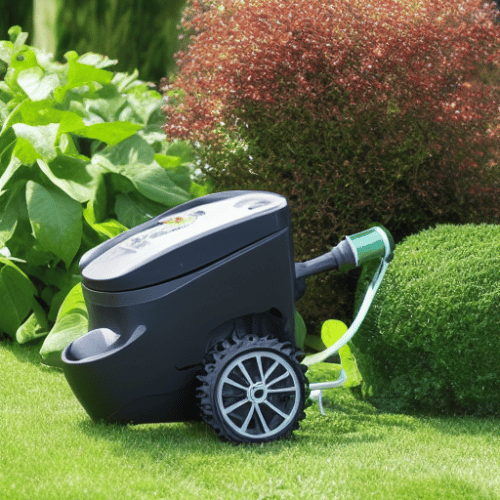
So how do you know when your blades need sharpening? And how often should you sharpen wood chipper blades? A general rule of thumb states that chipper blades should be changed after twenty-five hours of usage.
However, we advise using your common sense and performing regular maintenance checks. Before using your chipper, spend a few minutes checking it. Make sure the input and output areas are clean. Also, make sure the blades are clean. You should also check the sharpness of the blades at regular intervals.
You should notice a decline in performance as the old blades become dull. The shredder will require greater power if the blades are dull. In contrast, new blades or sharpened blades will require much less power to cut through even tough materials.
Garden Shredder FAQs
How Long Do the Blades on an Electric Wood Chipper Last?
It depends on your usage and the type of material you are shredding in your chipper. For example, if you only use your chipper blades a few times each year, they will last for a long time. Alternatively, if you are using the blades weekly, they will become dull much quicker. The general rule of thumb is that blades should last for approximately 25 hours of usage.
Can Dull Blades Cause Jams and Machine Problems?
Yes! Old blades and dull blades can cause serious problems with your disk chipper. If the blades cannot cut the garden material properly, the material can become stuck and jammed in the blades. It could also damage the motor due to overheating. Either way, a jam can be a tricky problem to solve. It could mean dismantling the gas chipper and trying to delve into its inner mechanisms!
Is a Garden Shredder Worth It?
It depends on the size and composition of your garden. If you have a small garden with just a lawn, a garden shredder may not be worth it. Alternatively, if you have a larger garden with multiple trees, bushes, and plants, a shredder is definitely worth the investment. Larger gas-powered models could also be a great choice as they generally offer greater power and cutting capabilities.
Start Sharpening Your Blades
Proper maintenance and care of wood chippers are essential. These mechanical items can have issues, and over time, their parts will degrade. Blade maintenance, in particular, is important. If you do not look after the blades, the garden sander will simply not work as effectively.
You will find it increasingly difficult to cut materials, and you may need to use more power than necessary. It could even lead to motor burnout or permanent damage to your garden shredder. Therefore, take care of your blades, learn how to sharpen garden shredder blades, and always get replacements if necessary.



